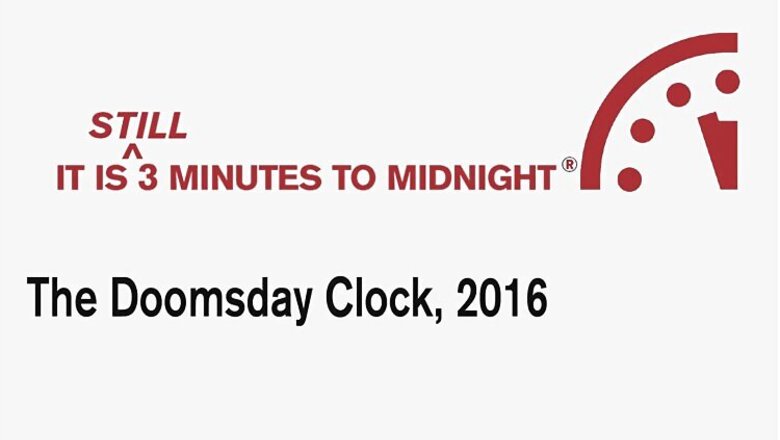
views
Washington: Nuclear threats and climate change pose strong threats to the planet and a symbolic "doomsday" clock will stay at three minutes to midnight, the Bulletin of the Atomic Scientists said Tuesday.
The clock serves as a metaphor for how close humanity is to destroying the planet, and was most recently moved closer to midnight in 2015.
"It remains the closest it has been over the past 20 years," said Rachel Bronson, executive director of the Bulletin of the Atomic Scientists, during a press conference in the US capital.
Global warming, terrorism, nuclear tensions between the United States and Russia, concerns over North Korean weapons, tensions between Pakistan and India, and cyber threats remain destabilizing influences, said Lawrence Krauss, a cosmologist and professor at Arizona State University.
The decision not to change the clock since 2015 is "not good news," he told reporters.
Despite some positive news last year, including the Iran nuclear agreement and the Paris climate talks, experts expressed concern that global nuclear arsenals are growing and anti-pollution pledges lack teeth.
"The fight against climate change has barely begun, and it is unclear if the nations of the world are ready to make the many hard choices that will be necessary to stabilize the climate and avert possible environmental disasters," said Krauss.
The decision to move the clock or not is led by the a group of scientists and intellectuals, including 16 Nobel Laureates.
The Doomsday Clock was created in 1947. It has changed 18 times since then, ranging from two minutes to midnight in 1953 to 17 minutes before midnight in 1991.
The last time it was three minutes to midnight was in 1983, when the Cold War between the United States and the Soviet Union was at its peak.
Some key dates in the clock's nearly 70-year history:
1953 — The clock comes the closest it ever has to midnight — just two minutes away — after the US and Soviet Union test hydrogen bombs. "The hands of the Clock of Doom have moved again," the Bulletin announces. "Only a few more swings of the pendulum, and, from Moscow to Chicago, atomic explosions will strike midnight for Western civilization."
1981 — The clock moves to four minutes-to-midnight after the Soviet Union invades Afghanistan and US President Jimmy Carter pulls the US from the Olympics in Moscow.
1991 — The clock drops to 17 minutes-to-midnight as the Cold War officially ends and the US and Russia begin making deep cuts to their nuclear arsenals. "The illusion that tens of thousands of nuclear weapons are a guarantor of national security has been stripped away," the Bulletin says.
1998— The clock moves to nine minutes-to-midnight after India and Pakistan stage nuclear weapons tests.
2015 — The clock moves to three minutes-to-midnight. The bulletin cites "unchecked climate change, global nuclear weapons modernizations, and outsized nuclear weapons arsenals" that pose "extraordinary and undeniable threats to the continued existence of humanity."
With input from agencies

















Comments
0 comment